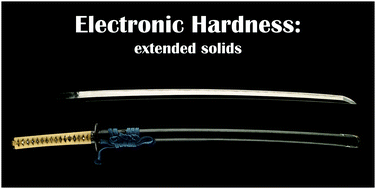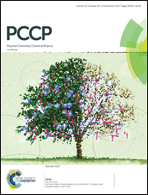The generalized maximum hardness principle revisited and applied to solids (Part 2)†
Abstract
Building on Part 1 devoted to atoms and molecules (PCCP, in press 2017), we now focus on the crystal structure and electronic properties of solids as viewed from the Maximum Hardness Principle (MHP), first formulated by Pearson in 1987. The focus is on cases where nuclear potential acting on electrons does not remain constant and where substantial modifications of the nuclear geometry take place (Generalized MHP, GMHP). We present an overview of important manifestations of the (G)MHP for solids such as (i) a tendency of metals and doped-semiconductors to undergo superconducting transition at low temperatures, (ii) propensity of many types of alloys to develop a band gap or a pseudo-gap, (iii) preference for preserving the noble gas (octet, doublet) configuration of main block element ions in the solid state, (iv) preference of Jahn–Teller systems for band-gap-opening vibronic-coupling-related lattice distortions, (v) pressure phenomena leading to localization of the electronic density, (vi) tendency to annihilate the null band gap via phase separation (while preserving the nominal chemical composition), (vii) absence of a large number of families of high-TC superconductors, (viii) resistance of most stable systems to chemical doping, etc. GMHP turns out to be an important qualitative guide in studies of solid state polymorphism and electronic phenomena. Exceptions from (G)MHP are discussed, and a more restrictive formulation of the principle is proposed.

- This article is part of the themed collections: PCCP Perspectives and 2017 PCCP HOT Articles


 Please wait while we load your content...
Please wait while we load your content...